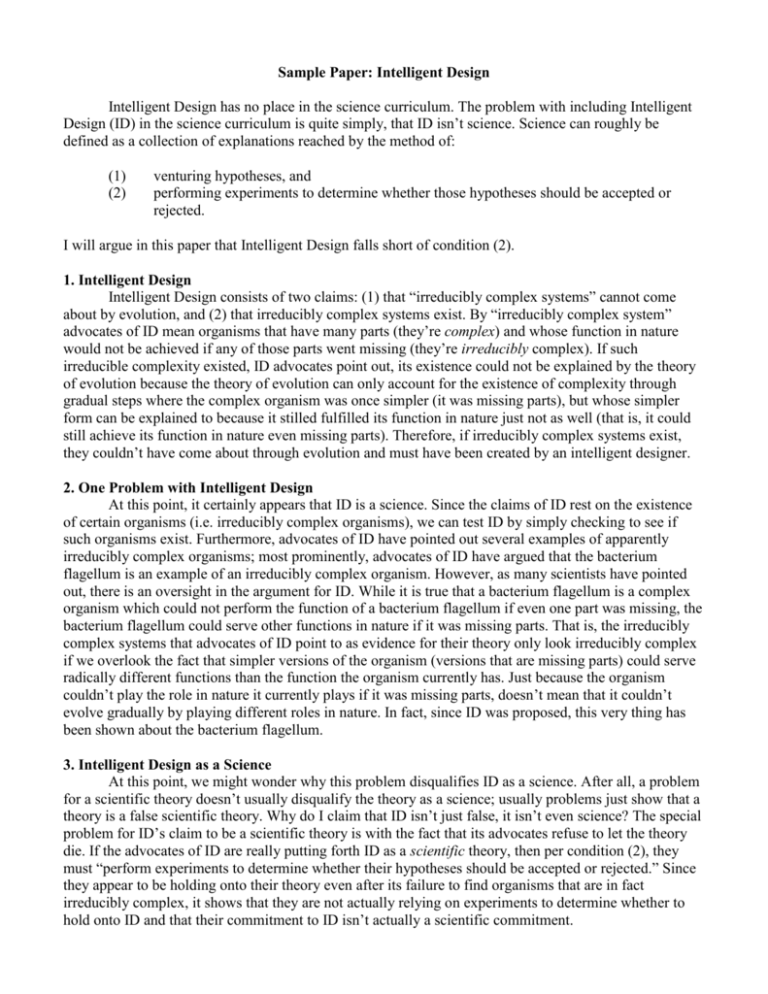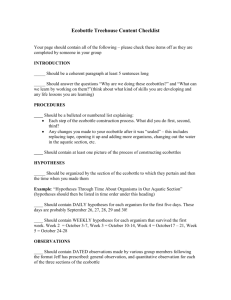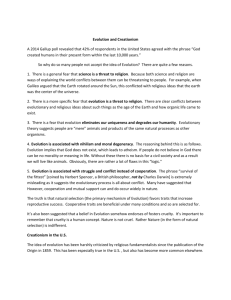Sample Paper: Intelligent Design
advertisement

Sample Paper: Intelligent Design Intelligent Design has no place in the science curriculum. The problem with including Intelligent Design (ID) in the science curriculum is quite simply, that ID isn’t science. Science can roughly be defined as a collection of explanations reached by the method of: (1) (2) venturing hypotheses, and performing experiments to determine whether those hypotheses should be accepted or rejected. I will argue in this paper that Intelligent Design falls short of condition (2). 1. Intelligent Design Intelligent Design consists of two claims: (1) that “irreducibly complex systems” cannot come about by evolution, and (2) that irreducibly complex systems exist. By “irreducibly complex system” advocates of ID mean organisms that have many parts (they’re complex) and whose function in nature would not be achieved if any of those parts went missing (they’re irreducibly complex). If such irreducible complexity existed, ID advocates point out, its existence could not be explained by the theory of evolution because the theory of evolution can only account for the existence of complexity through gradual steps where the complex organism was once simpler (it was missing parts), but whose simpler form can be explained to because it stilled fulfilled its function in nature just not as well (that is, it could still achieve its function in nature even missing parts). Therefore, if irreducibly complex systems exist, they couldn’t have come about through evolution and must have been created by an intelligent designer. 2. One Problem with Intelligent Design At this point, it certainly appears that ID is a science. Since the claims of ID rest on the existence of certain organisms (i.e. irreducibly complex organisms), we can test ID by simply checking to see if such organisms exist. Furthermore, advocates of ID have pointed out several examples of apparently irreducibly complex organisms; most prominently, advocates of ID have argued that the bacterium flagellum is an example of an irreducibly complex organism. However, as many scientists have pointed out, there is an oversight in the argument for ID. While it is true that a bacterium flagellum is a complex organism which could not perform the function of a bacterium flagellum if even one part was missing, the bacterium flagellum could serve other functions in nature if it was missing parts. That is, the irreducibly complex systems that advocates of ID point to as evidence for their theory only look irreducibly complex if we overlook the fact that simpler versions of the organism (versions that are missing parts) could serve radically different functions than the function the organism currently has. Just because the organism couldn’t play the role in nature it currently plays if it was missing parts, doesn’t mean that it couldn’t evolve gradually by playing different roles in nature. In fact, since ID was proposed, this very thing has been shown about the bacterium flagellum. 3. Intelligent Design as a Science At this point, we might wonder why this problem disqualifies ID as a science. After all, a problem for a scientific theory doesn’t usually disqualify the theory as a science; usually problems just show that a theory is a false scientific theory. Why do I claim that ID isn’t just false, it isn’t even science? The special problem for ID’s claim to be a scientific theory is with the fact that its advocates refuse to let the theory die. If the advocates of ID are really putting forth ID as a scientific theory, then per condition (2), they must “perform experiments to determine whether their hypotheses should be accepted or rejected.” Since they appear to be holding onto their theory even after its failure to find organisms that are in fact irreducibly complex, it shows that they are not actually relying on experiments to determine whether to hold onto ID and that their commitment to ID isn’t actually a scientific commitment.









